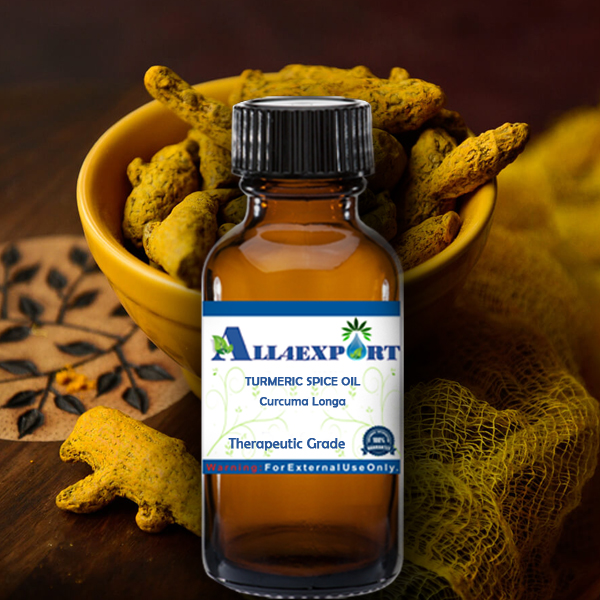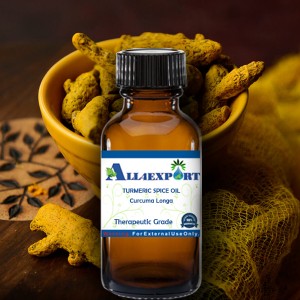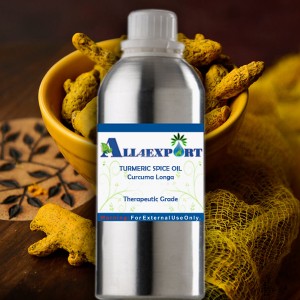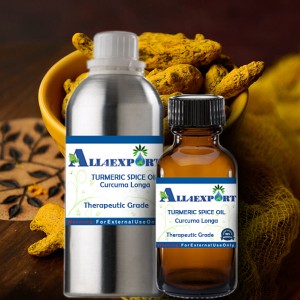| TURMERIC SPICE OIL |
Botanical Name | : | Curcuma longa | Country of Origin | : | India | Solubility | : | soluble in alcohol, insoluble in water | Specific Gravity | : | 0.9160-0.9366 | Optical Rotation | : | -24 – -27 @ 20°C | Refrective Index | : | 1.5023-1.5138 @ 20° c | Plant Part | : | Root | Bland With | : | Elecampane, ginger, labdanum and musk. | CAS No | : | 8024-37-1 | Flash Point | : | 60 °C | Extraction Method | : | Steam Distillation |
|
Description : Turmeric is a flowering plant of the ginger family, Zingiberaceae, the roots of which are used in cooking. Turmeric spice oil is much popular for its medicinal as well as coloring and flavoring properties. It is extracted from the turmeric plant which is widely cultivated because of its utility as a yellow-orange culinary spice.
|
Constituents : phellandrene, limonene, zingiberene, ar-curcumene, ar-turmerone, a-turmerone, ß-turmerone, 1,8-cineole. |
Uses : turmeric spice oil can give immediate relief from inflammation. Create an anti-inflammatory concoction by adding 4-5 drops of turmeric essential oil to a carrier oil like coconut, jojoba or olive oil. Apply on the area of concern.
|
Benefit : Turmeric spice oil is very much used in the pharmaceutical industry because of its role in relieving all kinds of pain, anxiety and stress; fighting physical and mental depression etc. It also is a popular insect repellent. The benefits of turmeric on the skin have been well proved. |
Caution Note: We recommend Keep out of the reach of children. Avoid contact with skin and eyes.
All of the information and opinions that are provided on this web site are for informational and educational purposes only. This information is not intended to replace medical advice given by a medical practitioner. Anyone considering alternative therapies should consult with their medical professional before using an alternative method of healing. We do not give nor is any opinion on our web site medical advice.
|



